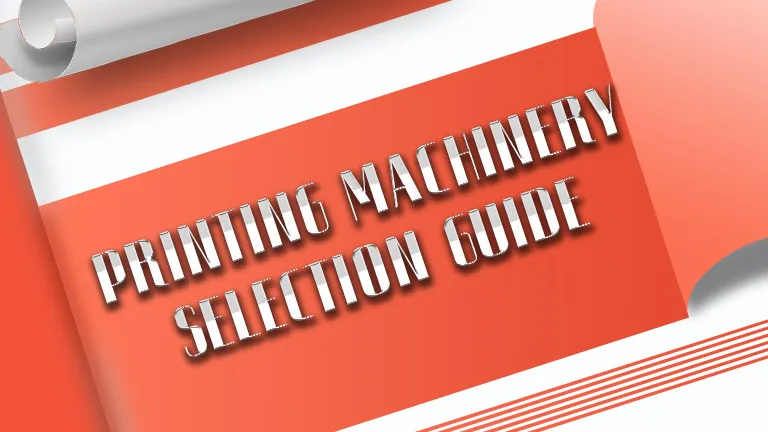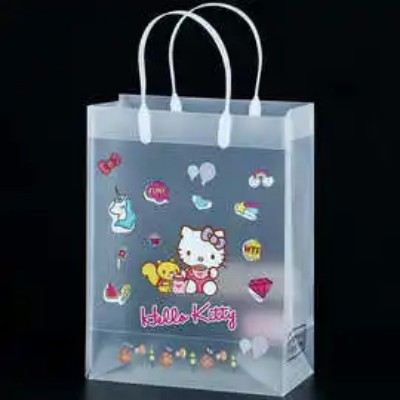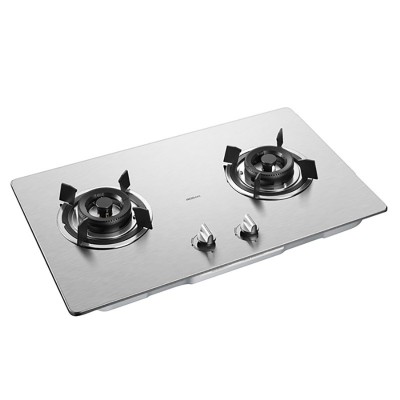Before purchasing equipment, you must be fully prepared and make careful decisions. The specific preparation work includes the following aspects. If these tasks can be done frequently or regularly, rather than urgently
It’s better to crawl if you need to buy equipment.
How to choose printing machinery
A survey of the printing market
Market research mainly includes:
①The development and changes of the printing market;
②The development trend and changes of printed matter;
③ Development trends and changes of electronic media and print media;
④ Development trends and changes of printing equipment;
⑤ Study the regional characteristics and market segmentation of the company.

Selection of printing method
Here we introduce the characteristics of common printing methods for reference when choosing.
1. Offset printing
At present, inkjet printers are widely used in traditional water-based offset printing.
(1) The main advantages of offset printing: The technology, equipment, and supporting raw and auxiliary materials are fully mature. The printing quality is good and the cost is low. Among various printing methods, offset printing is
The most ideal method for halftone color image reproduction, rich in tone, clear in layers, clear in dots, harmonious in color and natural in nature. In the production of printing plates, especially
CTP plate making technology is the most mature for wine packaging, and offset printing plate making technology is the most mature, with short offset printing plate making cycle, high efficiency and low cost.
(2) The main disadvantage of offset printing: the process is complex, and the relationship between offset printing machine, printing plate, paper, ink, ink balance and printing environment must be handled well. Second, offset printing
The ink layer of the brush is not as thick as gravure and screen printing. Once again, offset printing has great limitations in printing on plastic film (it is currently possible to print on plastic sheets).
Looking at the layout design comprehensively, the advantages of offset printing far outweigh the disadvantages, and it is the most widely used and dominant printing method among various printing methods.
2. Haw
(1) The main advantages of gravure printing: bright, full and three-dimensional, stable printing quality, and long printing plate life. Suitable for mass printing. Gravure printing equipment is simpler than offset presses
one. Can print on paper-based and very thin plastic film substrates. Inkjet printer
(2) The main disadvantages of gravure printing: the plate-making process is complicated, the supporting plate-making equipment is multi-image processing, and the price is high. Its bullying, the use of benzene-containing inks for gravure printing pollutes the environment and is harmful to human beings
It is harmful to the body, and ventilation equipment must be installed in the printing workshop.
Gravure is constantly improving due to technological advancements. The application of laser engraving gravure plate and gravure plate computer-to-plate (CTP) and the progress of water-based ink for gravure printing
Step by step to promote die-cutting, hot stamping and indentation, so that the two major problems of gravure printing process are gradually solved. Whether the solution to the important problems of gravure printing will reverse the downward trend of the gravure printing process remains to be practiced
inspection.
3. Flexographic printing
At present, the flexographic plate is made of photosensitive resin and rubber, and its hardness and thickness should be adapted to the printing material and printing color.
(1) The main advantages of flexographic printing:
① Wide range of applications and substrates.
② Water-based inks are generally used. No pollution, especially suitable for packaging and printing.
③Equipment structure is simple Kodak, easy to operate, easy to form production line. At present, the vast majority of flexographic printing presses are associated with processes such as bronzing, glazing, cutting, slitting, die
Cutting, creasing, punching, window opening and other processing technology connections, or forming production lines with other printing methods such as gravure printing, screen printing, digital printing, etc.
④The printing cost is lower. With the localized production of flexographic printing equipment and its plates and raw and auxiliary materials in China, its cost will gradually decrease.
(2) The main problems of flexographic printing:
①The domestic production of flexographic printing plates and raw and auxiliary materials has a long way to go.
②The problem of process standardization. There are many variables affecting flexographic printing, and it is difficult to achieve standardization and dataization.
③Careful selection of equipment and printed products: – One piece of equipment is not a panacea. Offset printing and gravure printing products cannot be printed immediately, and the product design should be improved according to the characteristics of flexographic printing.
4. Mesh (silk) printing
Screen printing can obtain very thick ink film (usually 20 ~ 100um, while offset printing is only 0.5 ~ 2μm). Because the ink film is thick, wine packaging, screen printing machine
To be equipped with a drying device.
Screen printing is commonly used on textile materials, electrical equipment housings, instrument panels, signage, printed circuit boards, large format advertisements and posters, packaging prints, curved objects
Printing of body and some handicrafts, etc.
(1) The main advantages of screen printing:
①A wide range of applications and printing materials.
②The ink layer is thick.
③It can be combined with electrolysis process, bronzing process, burning process, plastic molding process, etc. to produce different types of artworks.
(2) The main problems of screen printing:
① It is difficult to print halftone prints that require high overprint accuracy.
②The equipment speed is low and the printing efficiency is low.
5. Digital printing
Primarily used for personalization and print-on-demand.
(1) The main advantages of digital printing:
① It can meet a variety of personalized and on-demand printing requirements, and can print from one (copy) to thousands (copy);
② It can realize variable printing in which each piece of information is different during the printing process;
③ In the case of a small number of prints, the printing time is short and the printing price is lower than that of traditional printing;
④ The current printing quality stars can meet the general requirements of the public.
(2) The main problems of digital printing:
①Not suitable for Daxing printing;
②Can not meet the requirements of fine and high quality;
③The price of equipment and equipment is high.
(3) Classification of digital printing.
①Invariant graphic printing: Ying is the mechanical version of the traditional printing plate, that is, prepress, printing-integration. The characteristic is that after each printing plate is made, the graphic information is recorded, and it cannot be
Erasing, so cutting, and printing each image and text are the same, and variable printing cannot be achieved. But since all printed products use the same printing plate, the printing quality is stable. Unchanged graphic printing
Because the plate making and printing are on the same machine, the equipment price is high and the wine packaging cannot be printed during plate making, so the printing efficiency is low. Suitable for small quantity and fast printing
brush. Ink balance
②Variable graphic printing: there is an intermediate imaging carrier that can be printed with graphic and text, and the intermediate imaging carrier (printing plate) can be repeatedly imaged, and the graphic and text cannot be recorded but can be erased.
Brushing once needs to re-do the “printing plate” – – times. Even if the printed image and text are the same film, one should be printed to make a “printing plate” once. Therefore, the decision that affects the printing quality and its stability
The factor is imaging quality. At the same time, the accuracy and consistency of ink (toner) transfer also has an important impact on printing quality.
There is no inter-species imaging carrier variable graphic printing, and its imaging material is controlled by a computer, directly to the printing material (paper).
Variable graphics printing Adobe is suitable for printing Adobe products with frequently changing graphics, such as commercial papers, bills, statements, lottery tickets, direct mail prints, bills, etc.
③ Constant and variable graphic printing: The graphic of the intermediate imaging carrier can be recorded or erased as needed. When printing products with the same graphics and texts are required, the graphics and texts of the “printing plate” can be
Record. When it is necessary to print other graphic prints, the graphic of the “printing plate” can be wiped off, and the “printing plate” can be remade on the original cylinder. The same picture and text can be realized according to the needs
Or continuous printing with different pictures and texts.
6. Combined printing
Each printing method has its own characteristics. So overprinting, combining different types of printing methods, a combination printing method that learns from each other’s strengths and complements the shortcomings appeared.
(1) Combined printing method.
①Combination printing composed of traditional printing methods: that is, different combinations of offset printing, debossing, embossing, flexographic printing, screen printing, etc.;
②Combination printing composed of digital printing: a combination of different digital printing methods; .
③Combined printing composed of traditional printing and digital printing.
(2) The main problems of combined printing at present:
①Printability of substrates and inks. Different printing methods have different printing suitability requirements for substrates, and combined printing requires substrates to be compatible with different printing methods.
can adapt. Different printing methods have different inks. Whether the overprinting of different inks is compatible needs to be tested and selected in advance.
②The printing speed of various printing methods in combined printing is different, and it can only be low or high in the whole printing system. This affects the printing efficiency of the equipment.
③ standardization problem. Different printing methods have different printing process standards, and equipment with different printing methods has different design standards. The application of combined printing brings
The process standards and equipment standards have been resolved.



